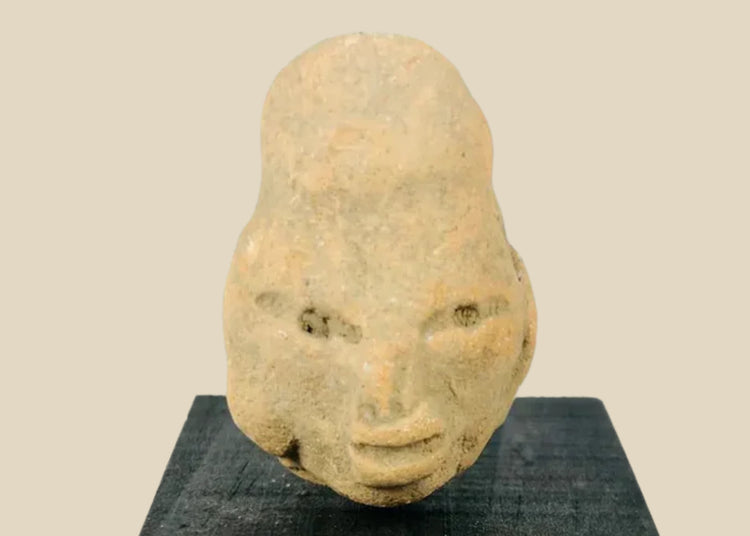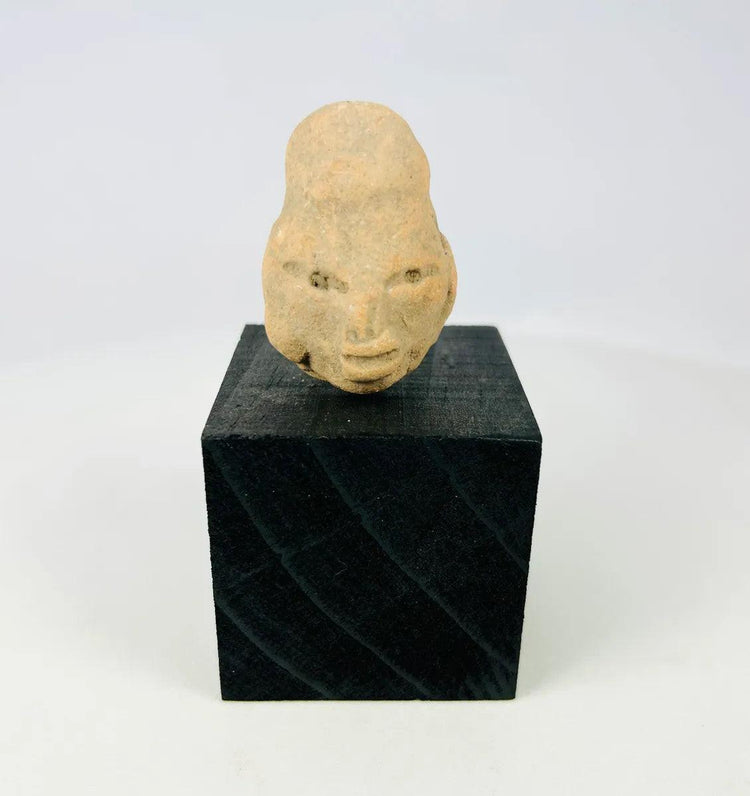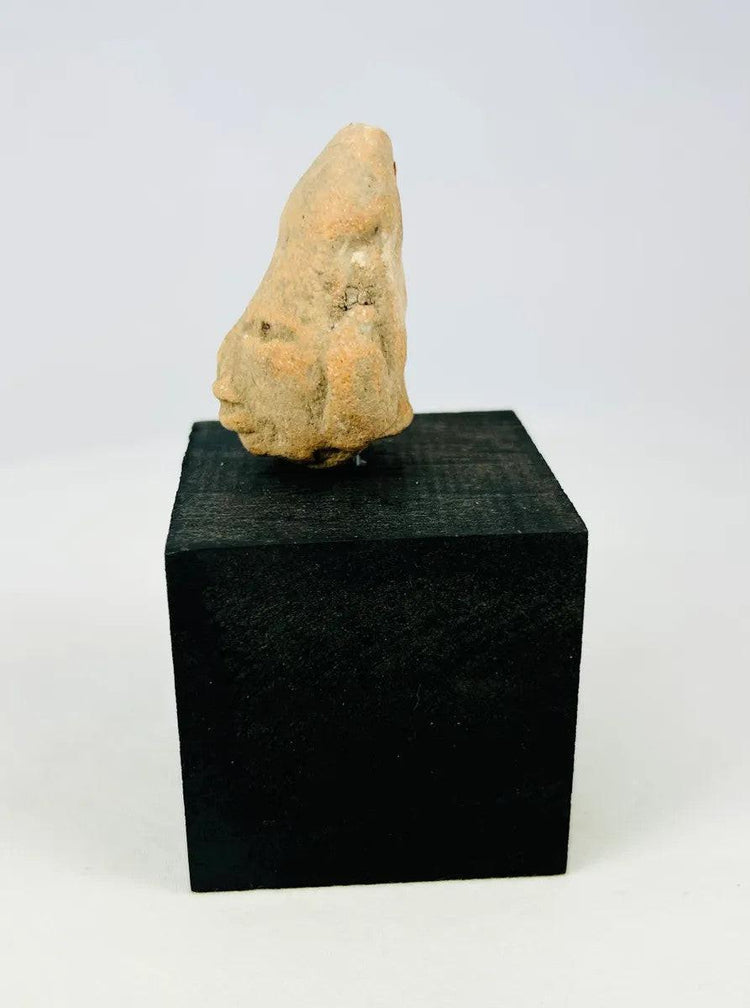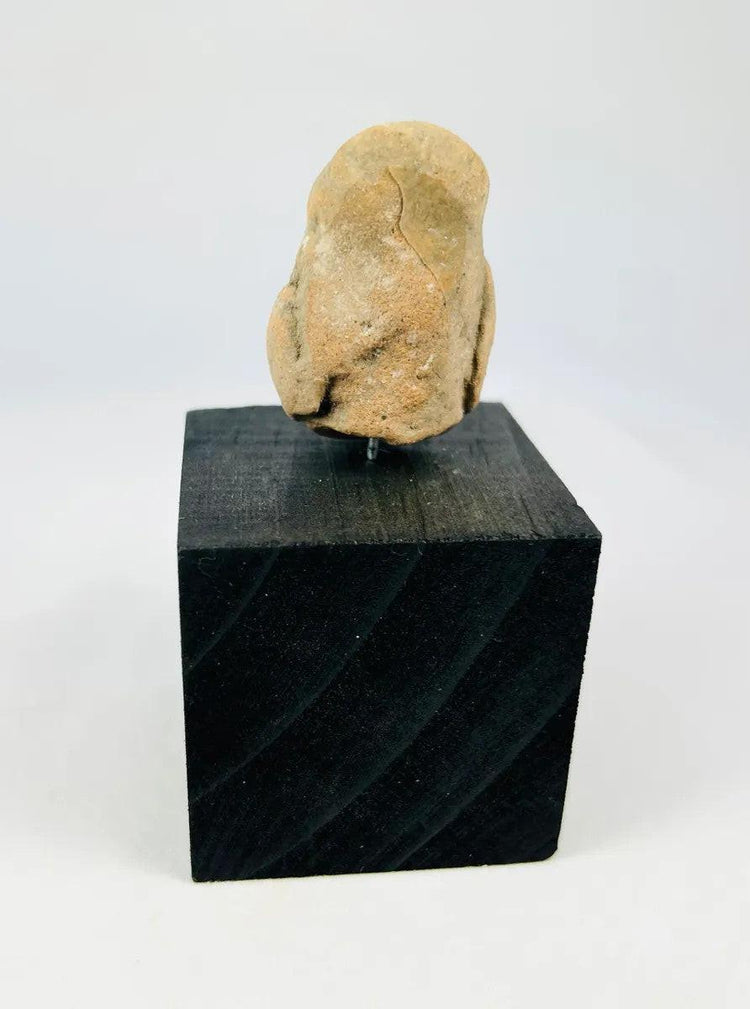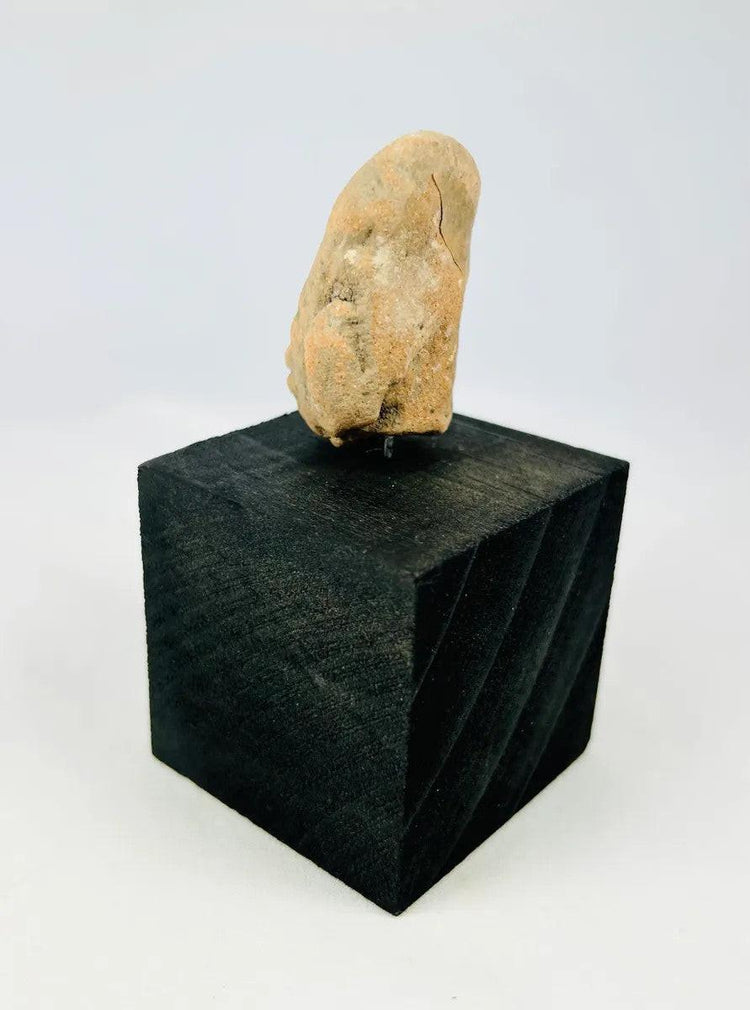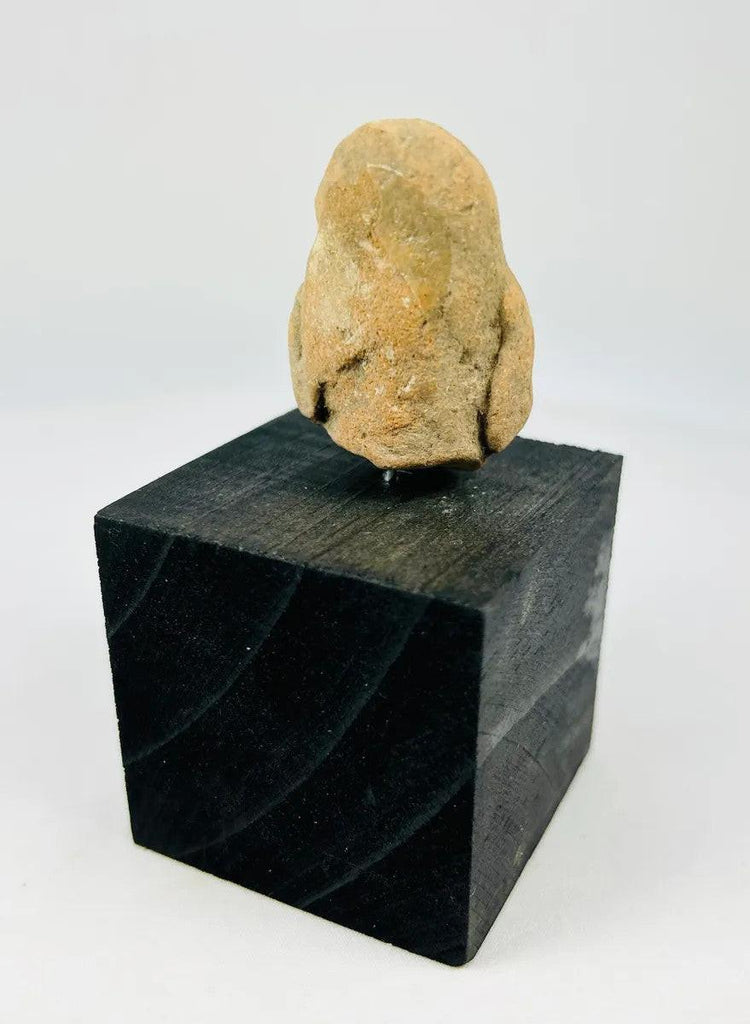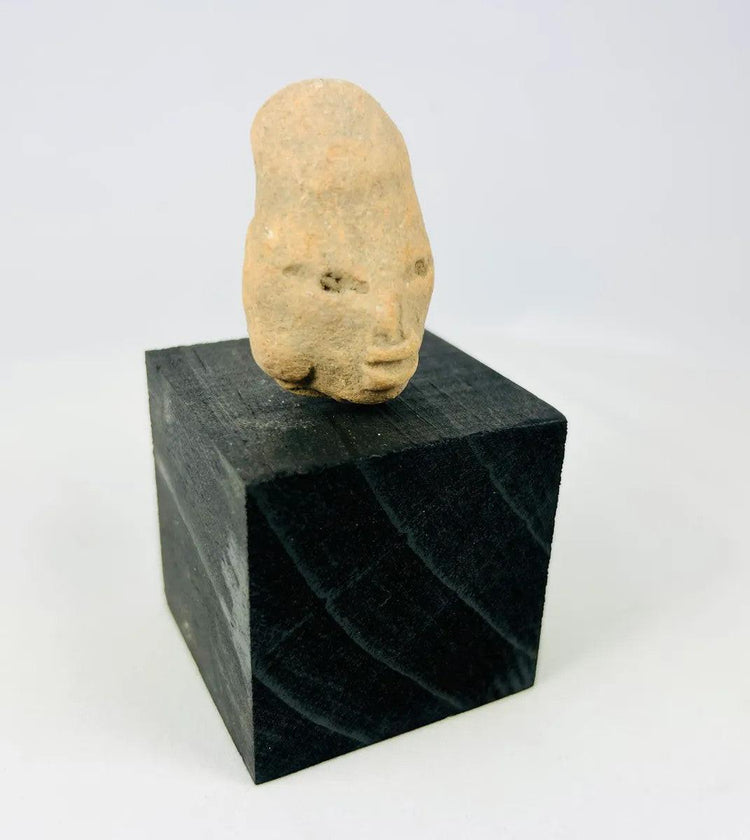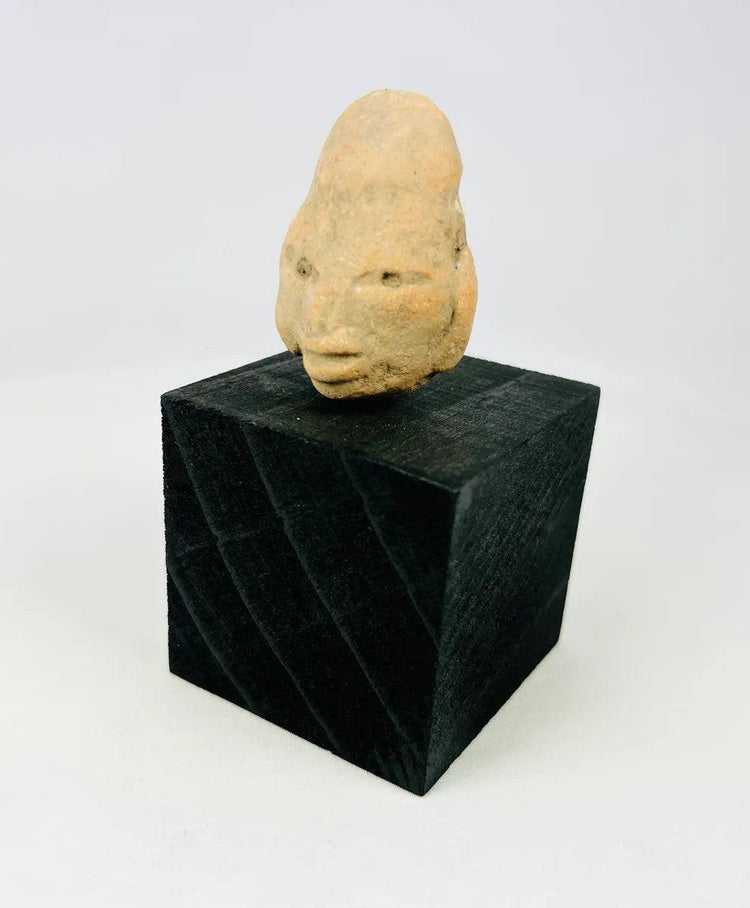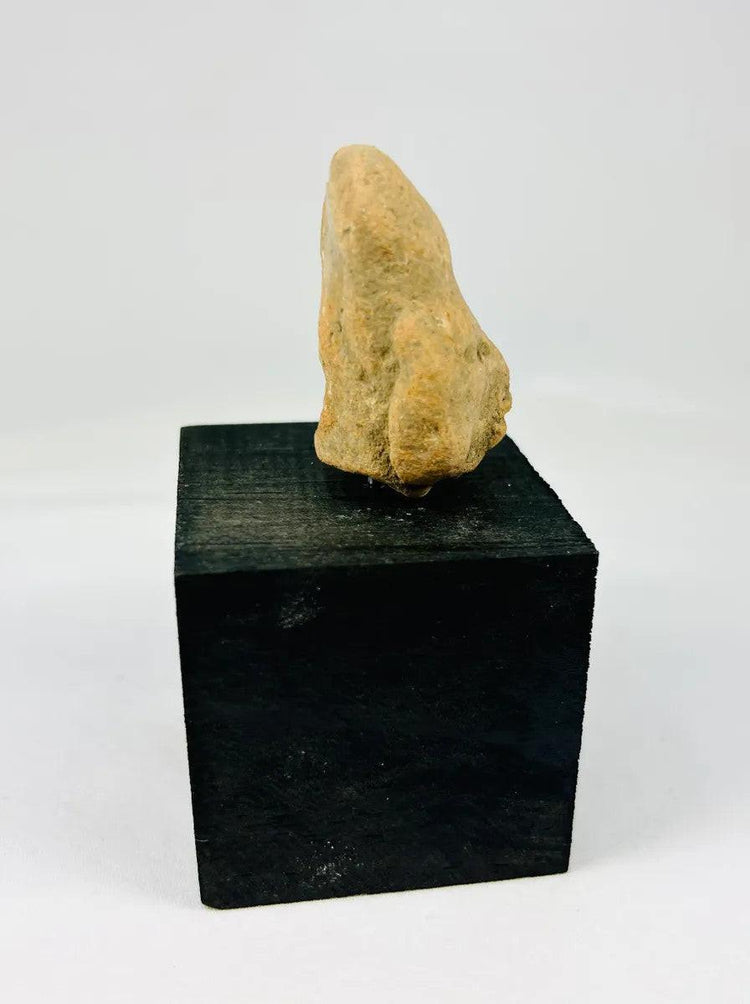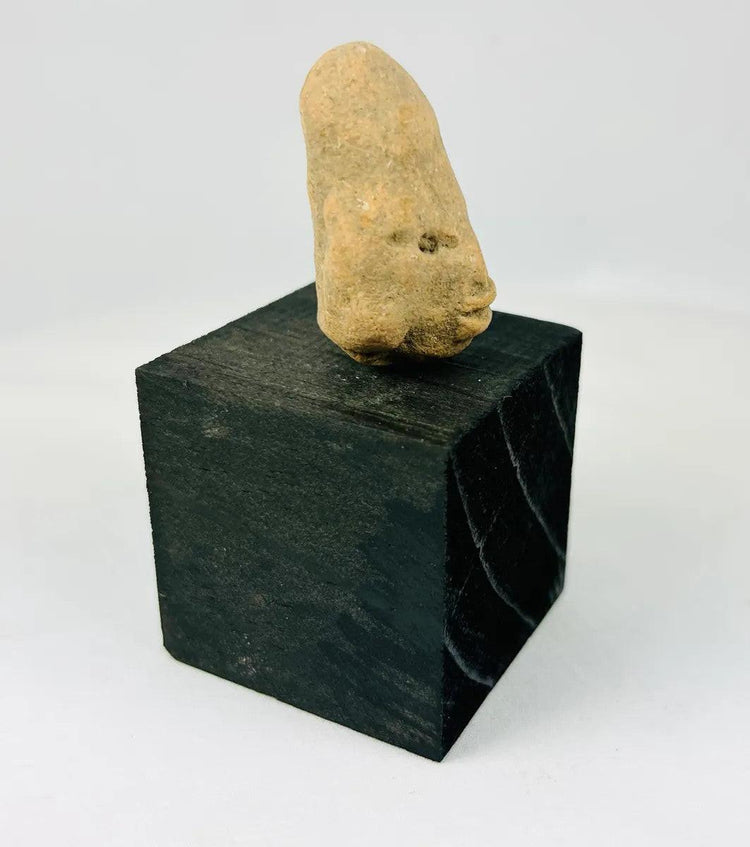Ancient Mesoamerican Terracotta Head | Nayarit/Jalisco Region | Circa 300BCE–300CE
Description
More
Less
Historical Context & Origin
Region: Mesoamerica, likely West Mexico (Nayarit/Jalisco region)
Material: Terracotta
Period: Circa 300 BCE – 300 CE
Description
A small terracotta fragment of a Pre-Columbian figure’s head, attributed to the shaft tomb cultures of West Mexico. The stylized facial features include almond-shaped eyes, a defined nose, and prominent lips. The elongated cranial form reflects deliberate cranial modification, a cultural practice in Mesoamerican societies symbolizing status, identity, or ideals of beauty. Now preserved as a fragment, it is mounted on a custom black display stand.
Features
- Distinctly modeled almond eyes, nose, and lips
- Evidence of cranial elongation, a hallmark of ritual identity
- Ancient surface wear and burial encrustations
- Mounted on custom black display stand
- Representative of West Mexican shaft tomb artistry
Cultural Significance
Terracotta heads of this type were originally part of larger funerary effigies placed in shaft tombs to honor the dead. These figures embodied ancestral presence and acted as mediators between the living and the afterlife. The elongated cranium reflects both ritual practices and cultural aesthetics central to Mesoamerican identity.
Condition
Fragmentary but stable. Surface encrustations, minor edge losses, and expected wear consistent with archaeological context. Features remain clearly legible and culturally significant.
Dimensions (approximate)
Height: 4 in
Width: 2 in
Depth: 2 in
Age
Circa 300 BCE – 300 CE
Description
Historical Context & Origin
Region: Mesoamerica, likely West Mexico (Nayarit/Jalisco region)
Material: Terracotta
Period: Circa 300 BCE – 300 CE
Description
A small terracotta fragment of a Pre-Columbian figure’s head, attributed to the shaft tomb cultures of West Mexico. The stylized facial features include almond-shaped eyes, a defined nose, and prominent lips. The elongated cranial form reflects deliberate cranial modification, a cultural practice in Mesoamerican societies symbolizing status, identity, or ideals of beauty. Now preserved as a fragment, it is mounted on a custom black display stand.
Features
- Distinctly modeled almond eyes, nose, and lips
- Evidence of cranial elongation, a hallmark of ritual identity
- Ancient surface wear and burial encrustations
- Mounted on custom black display stand
- Representative of West Mexican shaft tomb artistry
Cultural Significance
Terracotta heads of this type were originally part of larger funerary effigies placed in shaft tombs to honor the dead. These figures embodied ancestral presence and acted as mediators between the living and the afterlife. The elongated cranium reflects both ritual practices and cultural aesthetics central to Mesoamerican identity.
Condition
Fragmentary but stable. Surface encrustations, minor edge losses, and expected wear consistent with archaeological context. Features remain clearly legible and culturally significant.
Dimensions (approximate)
Height: 4 in
Width: 2 in
Depth: 2 in
Age
Circa 300 BCE – 300 CE
You May Also Like


























